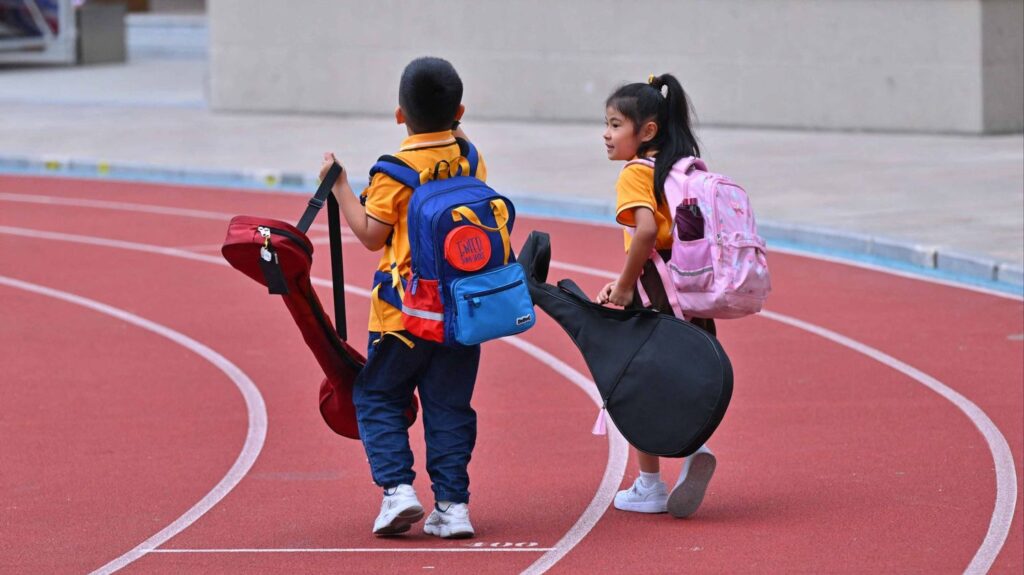Published
Reading time: 4min
/2025/10/28/adobe-express-file-6900d76e1a991776881010.jpg)
The communist country saw its population decline for the third year in a row, with more deaths than births.
In China, cradles remain empty. And the streets of Beijing, Guangzhou and Shanghai are revealing more and more gray hair. A strong trend in the second most populous country in the world behind Indiawhere deaths now outnumber births. As a result, the Chinese population, estimated at 1.408 billion inhabitantshas been in decline for three years. To the point of alerting the authorities who are trying to revive the birth rate, ten years after the end of the one-child policy.
From 1979, in China, married couples could not have more than one child. The communist regime, which perceives the increase in the number of inhabitants as a threat to the stability of the country, then wishes “control the population growth rate as quickly as possible”. The one-child policy lasted for more than three decades, before Beijing reversed it in 2015 and allowed couples to have two children. Then three from 2021.
Why such a turnaround? With fewer births, the age pyramid has inverted, placing more and more elders at the top and fewer and fewer children at the bottom. The fertility rate, that is to say the average number of children that Chinese women give birth during their lifetime, amounted to only 1 child per woman in 2023, according to data from the World Bank Group.
Added to this is an imbalance between the sexes, a direct legacy of the one-child policy. “There are more men than women”notes Marc Julienne, researcher at the French Institute of International Relations (Ifri). The last census dating from 2024 counts around 104.34 men per 100 women, according to Chinese news agency ECNS.
“It is a tragic consequence of a long-standing preference for boys with selective abortions and infanticide of little girls.”
Marc Julienne, researcher at the French Institute of International Relationsat franceinfo
The aging of the population creates an economic burden, highlighted by the Chinese power. Fewer children means fewer workers in the future and more retirees to support. “Economically, socially and politically, and even when looking ahead to the years to come, demographics remain the most determining and overwhelming factor for China”, notes Marc Julienne.
Demographer Isabelle Attané places China within a regional trend: “What is happening there is very similar to the situation in Japan or South Korea. Couples are having fewer children and especially later.” A logical development, she explains, in a country where life is becoming more and more expensive and where women now occupy a growing place in the job market.
For Marc Julienne, the cost of living is one of the obstacles to a revival of the birth rate.
“You only need to speak to a young worker in China to hear an observation: education, housing and health are too expensive. And existing public measures remain insufficient to reduce these expenses.”
Marc Julienne, researcher at the French Institute of International Relationsat franceinfo
To hope to reverse the trend, the authorities can “improve early childhood care, better support schools and strengthen support for the elderly”pleads Isabelle Attané. And this, even if “in current China, as it is run, the very idea of social assistance or money transfers to the population can be perceived as a form of assistance”observes Marc Julienne.
These financial constraints are not anecdotal. According to a 2024 report from YuWa Population Research Institutebased in Beijing, the average cost of raising a child in China until they turn 18 is 538,000 yuan, or around 65,000 euros. This amount represents more than six times the country’s annual GDP per capita.
At the same time, the absence of a universal pension system pushes families to save for their elderly parents and their own retirement. “In China, we are in a Confucian system where filial piety remains very strong”recalls Marc Julienne. Younger generations often find themselves supporting parents and children, a precarious financial balance which can partly explain the lasting decline in births.
Faced with this phenomenon, Beijing is increasing its initiatives. The government has deployed several measures: an annual allowance of 3,600 yuan, or around 430 euros, for each child under three years old and even telephone calls from officials responsible for encouraging women to have a child. But these efforts, often restricted to certain provinces, are visibly struggling to produce effects.


